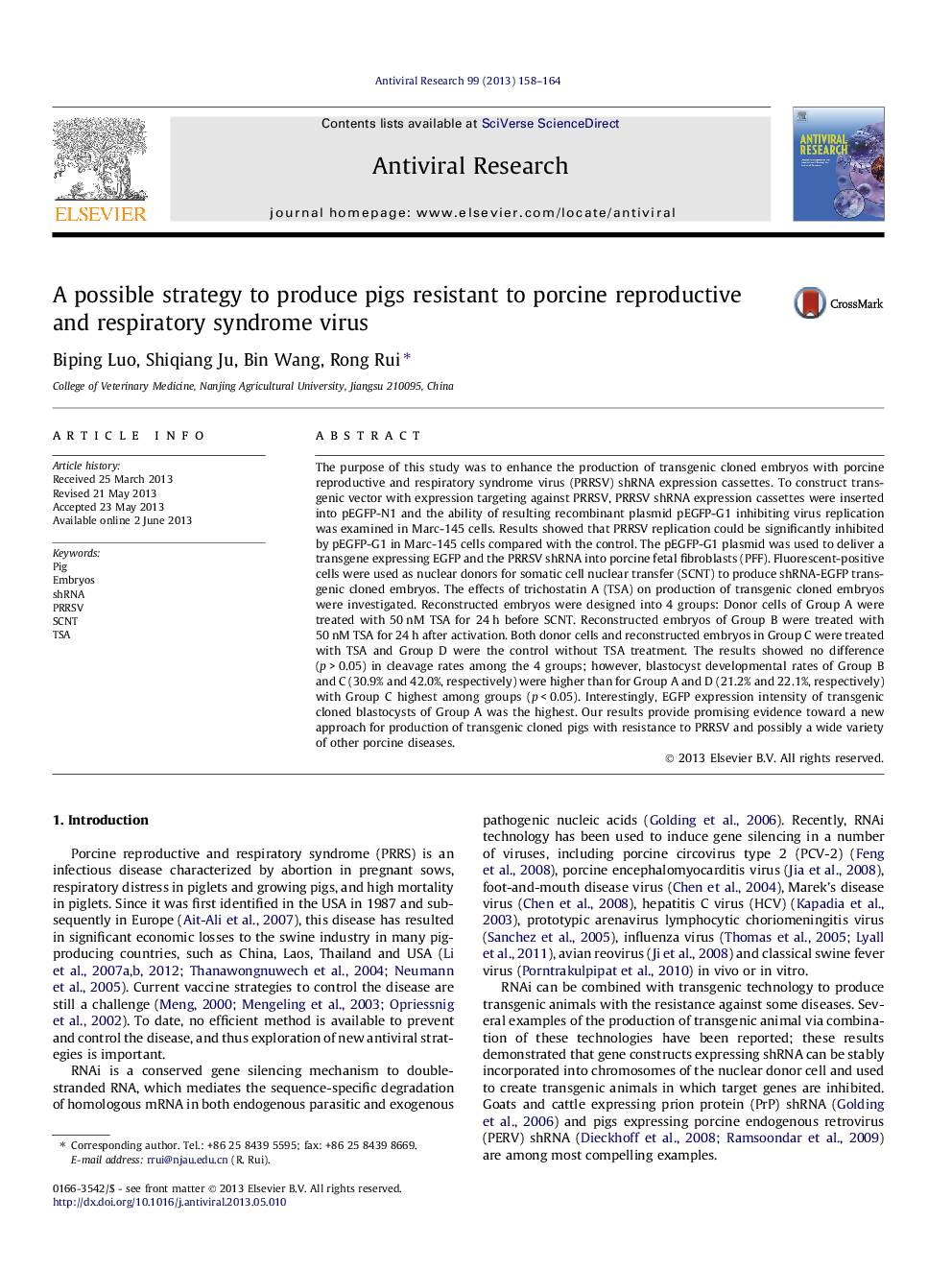| Article ID | Journal | Published Year | Pages | File Type |
|---|---|---|---|---|
| 2510135 | Antiviral Research | 2013 | 7 Pages |
•It is the first report on production of transgenic cloned pig embryos potentially resistant to PRRSV.•This work combined SCNT, transgenic and RNAi technologies together.•First evaluation of transgenic expression intensity in porcine blastocysts.
The purpose of this study was to enhance the production of transgenic cloned embryos with porcine reproductive and respiratory syndrome virus (PRRSV) shRNA expression cassettes. To construct transgenic vector with expression targeting against PRRSV, PRRSV shRNA expression cassettes were inserted into pEGFP-N1 and the ability of resulting recombinant plasmid pEGFP-G1 inhibiting virus replication was examined in Marc-145 cells. Results showed that PRRSV replication could be significantly inhibited by pEGFP-G1 in Marc-145 cells compared with the control. The pEGFP-G1 plasmid was used to deliver a transgene expressing EGFP and the PRRSV shRNA into porcine fetal fibroblasts (PFF). Fluorescent-positive cells were used as nuclear donors for somatic cell nuclear transfer (SCNT) to produce shRNA-EGFP transgenic cloned embryos. The effects of trichostatin A (TSA) on production of transgenic cloned embryos were investigated. Reconstructed embryos were designed into 4 groups: Donor cells of Group A were treated with 50 nM TSA for 24 h before SCNT. Reconstructed embryos of Group B were treated with 50 nM TSA for 24 h after activation. Both donor cells and reconstructed embryos in Group C were treated with TSA and Group D were the control without TSA treatment. The results showed no difference (p > 0.05) in cleavage rates among the 4 groups; however, blastocyst developmental rates of Group B and C (30.9% and 42.0%, respectively) were higher than for Group A and D (21.2% and 22.1%, respectively) with Group C highest among groups (p < 0.05). Interestingly, EGFP expression intensity of transgenic cloned blastocysts of Group A was the highest. Our results provide promising evidence toward a new approach for production of transgenic cloned pigs with resistance to PRRSV and possibly a wide variety of other porcine diseases.
